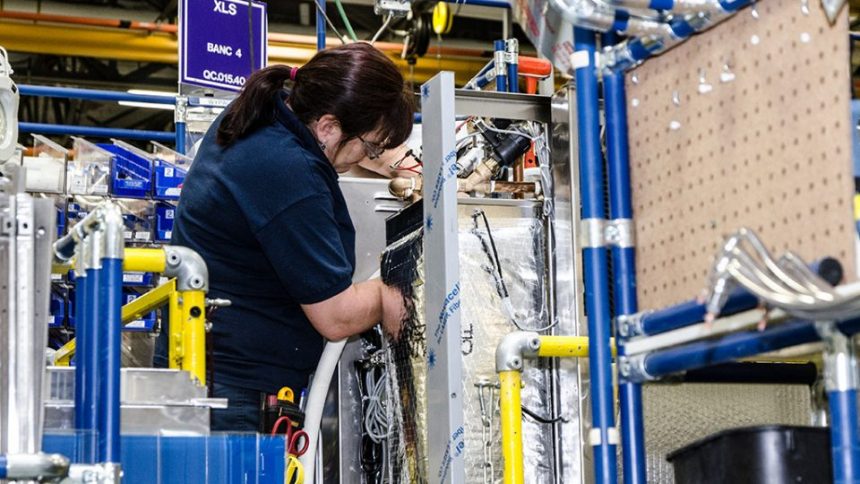A new era of intelligent factories and unheard-of efficiency is being ushered in by the Industrial Internet of Things (IIoT), which is changing the industrial industry. As a critical element of Industry 4.0, IIoT-driven industrial automation is revolutionizing how organizations run and empowering them to remain competitive in a changing market. An in-depth analysis of the industrial automation driven by the IIoT and the vital elements that make it possible is provided in this article.
Four fundamental components—connected devices and sensors, sophisticated communication protocols, data analytics and processing, and integration with automation systems—form the foundation of IIoT-driven industrial automation. These elements provide seamless communication and real-time data analysis, enabling firms to improve production procedures and make well-informed decisions.
Industrial automation driven by the IIoT has numerous advantages. Real-time data analysis and improved connectivity result in better decision-making and higher operational efficiency. Manufacturers can apply predictive maintenance, minimizing downtime and waste while enhancing product quality and consistency, by tracking and evaluating data from numerous sources. Increased flexibility and scalability provided by IIoT-driven automation enable firms to respond to shifting consumer expectations. Additionally, the application of IIoT technology may increase security and safety, guaranteeing a safer working environment for employees.
Many real-world examples have illustrated the transformational potential of IIoT-driven industrial automation. For example, automotive manufacturers have used connected devices and sensors to speed up production processes and reduce errors. IIoT technology has enabled accurate and effective manufacturing processes in the pharmaceutical sector, ensuring the creation of high-quality drugs. Consumer goods manufacturers have profited from automation driven by the IIoT, which has increased product quality and decreased waste. Chemical processing facilities have also used IoT technologies to improve compliance and safety.
Nevertheless, putting into practice IIoT-driven industrial automation has its challenges. It takes a systematic strategy to integrate IIoT technologies into current systems and processes, including creating a roadmap for frictionless integration. Additionally important are data security and privacy, which need strong cybersecurity measures to safeguard IIoT networks and guarantee data privacy. Investing in employee growth and education is also necessary for successful IIoT adoption, which calls for trained staff and appropriate training. Lastly, embracing new technology and creating an innovative culture is essential for success in the latest manufacturing era.
Industrial automation powered by the IIoT is intrinsically tied to the future of manufacturing. The manufacturing industry will experience more innovation due to new trends and technologies like edge computing and 5G that will further improve connectivity and data transfer capabilities. IIoT-driven automation will also be significantly influenced by artificial intelligence (AI) and machine learning, enabling proactive maintenance and improved manufacturing procedures. Sustainability and environmentally friendly manufacturing practices will become increasingly important as the manufacturing sector develops, and IIoT-driven industrial automation will be essential to accomplishing these objectives.
Large-scale manufacturers are not the only ones who may adopt IIoT-driven industrial automation; small and medium-sized businesses (SMEs) can also greatly profit from this paradigm shift. SMEs can benefit from cost reductions, increased efficiency, and increased competitiveness by utilizing IIoT technology. These cutting-edge technologies have become more accessible to smaller businesses thanks to their democratization, leveling the playing field and encouraging innovation across the manufacturing sector.
The growth of cloud computing, which enables manufacturers to store, process, and analyze massive volumes of data remotely, is one of the primary facilitators of IIoT-driven industrial automation. Due to this, effective software platforms have been created that can be used and accessible by companies of all sizes, allowing for the smooth integration of IIoT technologies into current workflows. Additionally, cloud computing has made it easier for departments within a manufacturing firm to work together, encouraging cross-functional efficiency and shattering old silos.
The significance of standardization and interoperability is other crucial component of IIoT-driven industrial automation. As more systems, sensors, and devices are linked, it is critical to ensure they can communicate and cooperate efficiently. Establishing standards and protocols that encourage the seamless integration of IIoT components is a joint effort by industry groups and technology providers, ensuring that manufacturers can fully realize the benefits of this ground-breaking approach to automation.
In conclusion, industrial automation powered by IIoT is transforming the manufacturing industry and bringing advantages to companies of all sizes. SMEs may use IIoT to boost productivity, cut expenses, and compete with more prominent players in the market. The potential of IIoT-driven industrial automation is being unlocked through cloud computing, standardization, and interoperability, opening the way for a more sustainable and creative future for the manufacturing industry. Businesses must embrace the possibilities of IIoT-driven industrial automation to succeed in the long run and keep a competitive edge in the modern manufacturing era. Investing in these cutting-edge technologies is now a requirement rather than a luxury for enterprises hoping to achieve in a changing industrial environment. Companies may open up new growth prospects and stimulate sustainable innovation by implementing IIoT-driven industrial automation.















